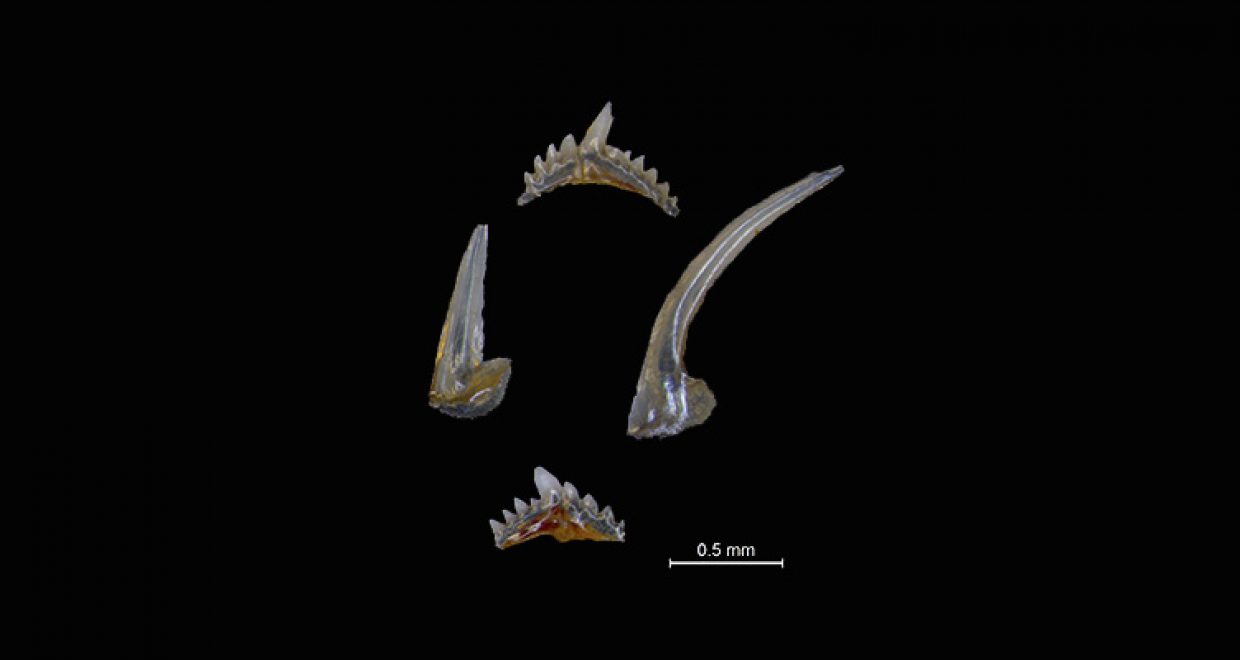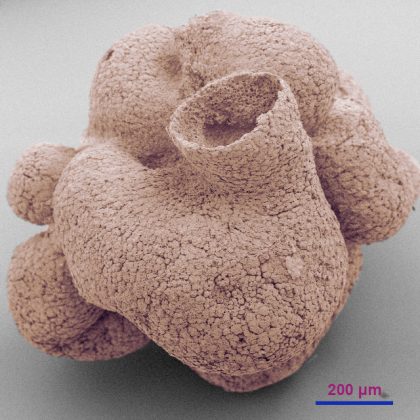Unlocking records for North American climate change from 450 million year old teeth
Can tiny fossilized teeth from a prehistoric animal most closely resembling a lamprey provide crucial information about climatic change from over 450 million years ago? In short—yes! In this month’s issue of Geological Magazine, Dr. Page Quinton and colleagues utilize key temperature information locked inside conodont fossils to tackle an Ordovician climate change mystery. By reconstructing oxygen isotope records that are a proxy for temperature from several sedimentary sections across the North American east and mid-west, Quinton et al. reconsider the hypothesis that dramatic cooling and glaciation in the Late Ordovician (~453 Ma; latest Sandbian-early Katian) fundamentally changed environmental conditions in the region and forced out ‘warm-water’ carbonate reef communities with ‘cool-water’ communities.
Conodonts are eel-shaped animals, much like the modern lamprey and hagfish that, despite lacking jaws, have gills full of precisely articulated teeth, also known as elements. In the case of the conodont, these hard elements are much more easily preserved than the animal’s soft tissue in the fossil record. Key to part of their preservation, and crucial in their use as palaeo-thermometers, conodont fossils are made of an incredibly resilient phase of hydroxyapatite, a crystalline form of calcium phosphate. As this special apatite precipitates, it locks in the oxygen isotopic composition of the surrounding environment (here, sea water). Based on the relative abundance of oxygen isotopes, each specific composition can then be later translated to a precise temperature in the lab.
In this study, Quinton et al. present new conodont oxygen isotope records from apatite paired with brachiopod oxygen and carbon isotope records from five stratigraphic sections to reevaluate if local sea water temperatures changed through time, and critically if this was a dominant control on the observed ecological shift in reef carbonates. Their key results demonstrate a consistent shift to warmer water temperatures (a δ 18^O decrease by ~1.5 ‰) and likely regional warming (~4–5 °C). Although they do recognize a temperature shift, their findings contrast with the proposed ‘cool-water’ hypothesis—they find waters warm rather than cool. This leads the authors to argue that water temperature alone cannot be a dominant factor controlling stratigraphic changes in Late Ordovician carbonate communities. Instead, they suggest tectonic activity related to building of the early Appalachian Mountains (Taconic Orogeny) may be to blame. Increased suspended material flushed into the shallow marine realm as a result of increased sedimentation during vigorous mountain building may be more probable as many ‘warm-water’, photosynthesizing carbonate-producers especially prefer clear water.
The full article “Testing the early Late Ordovician cool-water hypothesis with oxygen isotopes from conodont apatite” by Page C. Quinton, Stacey Law, Kenneth G. MacLeod, Achim D. Herrmann, John T. Haynes and Stephen A. Leslie is available to download free of charge for a limited time here.






